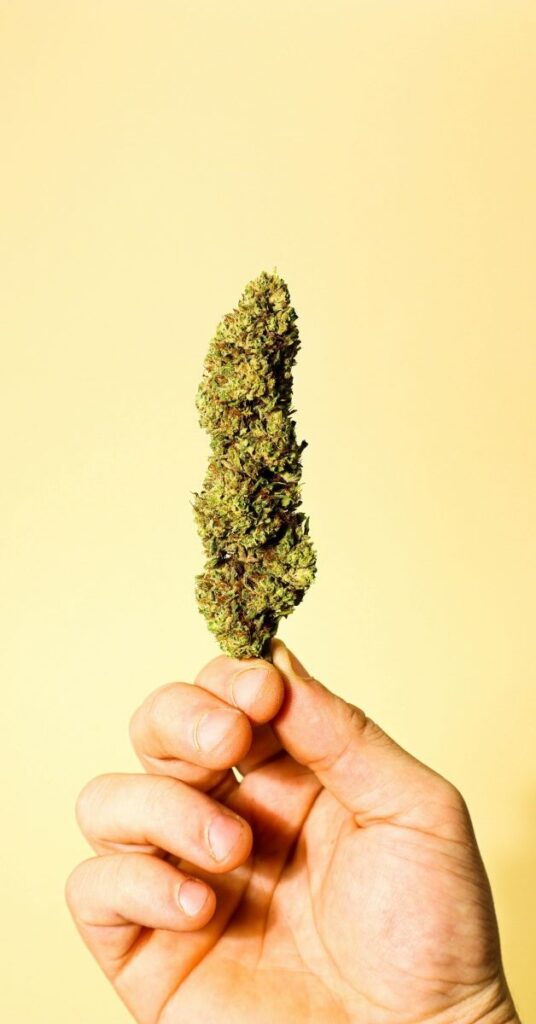STORE INFO
Location & Store Hoursmy cart
Secure checkout
Honestly, decarboxylation sounds like something you should do in a lab, not your kitchen. And while lab decarboxylation is more controlled than oven decarboxylation, you really don’t have to be a scientist to do it.
It may sound intimidating, but it's actually a basic step that makes all the difference in how your CBD will work.
So, what is decarboxylation, and why should you care?
Decarboxylation is the process of heating cannabis or hemp to “activate” its compounds. In raw form, the plant has cannabinoid acids, like CBDa (cannabidiolic acid) and THCa (tetrahydrocannabinolic acid).
Your body doesn’t efficiently use those forms, so they undergo transformation to become more usable.
When you apply heat, through baking, vaping, or a controlled oven process, a chemical change happens. The plant compounds lose a carbon atom in the form of carbon dioxide. This shifts CBDa into CBD, and THCa into THC.
This process increases their usability in the body, making them easier to absorb and engage with physiological processes.
Without this step, THC remains non-psychoactive and CBD may be less effective in producing the desired responses in the body.

Yes, if you're buying a CBD tincture or gummy, the CBD has already been decarboxylated. You don’t need to worry about heating it yourself, the manufacturers take care of that step for you.
In a professional setting, decarboxylation is a precise, closely monitored process. Producers use industrial-grade equipment to heat hemp extract at controlled temperatures. This lets them activate the cannabinoids while preserving the terpenes, flavonoids, and other plant compounds.
Manufacturers also perform lab testing at different stages, before decarb, after decarb, and after formulation, to make sure the final CBD concentration matches the label.
So when you see “CBD” on a product label, it’s not CBDa. The work has already been done through careful decarboxylation in a lab-controlled environment.
Although CBD isn’t psychoactive, it generally needs to be decarboxylated to interact better in the body. Because of its different structure, the body doesn’t respond to CBDa as well. Many users believe that properties like calm support and balance are tied to the activated form.
This process also supports what’s known as the entourage effect. The idea is that CBD works better when it’s interacting with other cannabinoids, terpenes, and flavonoids. Proper decarboxylation helps preserve these elements so they can work together more effectively.
Most commercial CBD products already contain decarboxylated CBD. But if you're working with raw hemp or flower yourself, this step is completely up to you.
So, how do you do it right?
Gentle heat over a controlled period helps activate the compounds without degrading them. If the temperature is too high or the exposure is too long, you risk losing effectiveness.
Believe it or not, your oven is the best answer:
Once cooled, your flowers are decarboxylated and ready to be infused into oil. This step is also important because CBD is fat-soluble. It needs fat to bind to in order for your body to absorb it properly.
There are also decarboxylation devices on the market that automate the process.. They control decarboxylation temperature and time more precisely than a home oven, and yield more even results.
If you’re working with larger batches or need consistent potency, these devices might be worth the investment. But for most people, the oven method works great.
The two biggest factors in a successful decarb are temperature and time. For CBD, the right balance is a bit different from what it is for THC.
Ideal Temp: 240-250°F / 115-121°C
Time Needed: 40-60 minutes
CBD typically requires more time (or slightly higher temperature) than THC to convert fully. So when working with high-CBD hemp, it’s safer to use a more conservative schedule (e.g. toward the upper range) and allow a full hour if needed.
For perfect results, you should be mindful of a few more things.
There are a few signs to watch for, and once you’ve done it a couple of times, you’ll know right away.
Raw CBD flowers start out green. Once properly decarboxylated, they should turn light to medium brown. If it looks burnt, you’ve gone too far.
A strong, roasted, earthy aroma is a good sign that the cannabinoids are activated. It’s not the same as the raw plant smell. If your kitchen smells like tea and roasted herbs, you did it!
Properly decarbed flower won’t feel sticky or damp anymore. It should break apart easily with your fingers. That structure makes it easier to infuse into oils or mix into DIY recipes.
Decarboxylation might sound sciency, but it’s really easy once you get the hang of it. “If you skip this step, a large portion of the CBD may remain unconverted and less useful in your end product. The right decarboxylation temperature and time, around 240°F for 40-60 minutes for CBD, will give you an activated product ready for infusions, edibles, or tinctures.
CBD decarboxylation is that one step between raw flowers and products that work. Get it right, and you can enjoy homemade infusions any day.